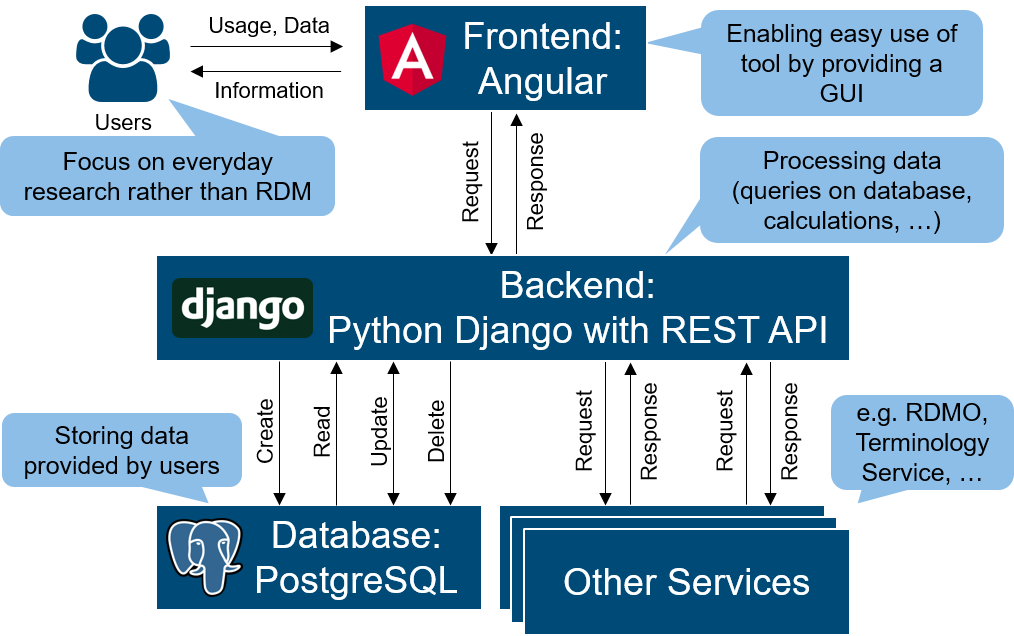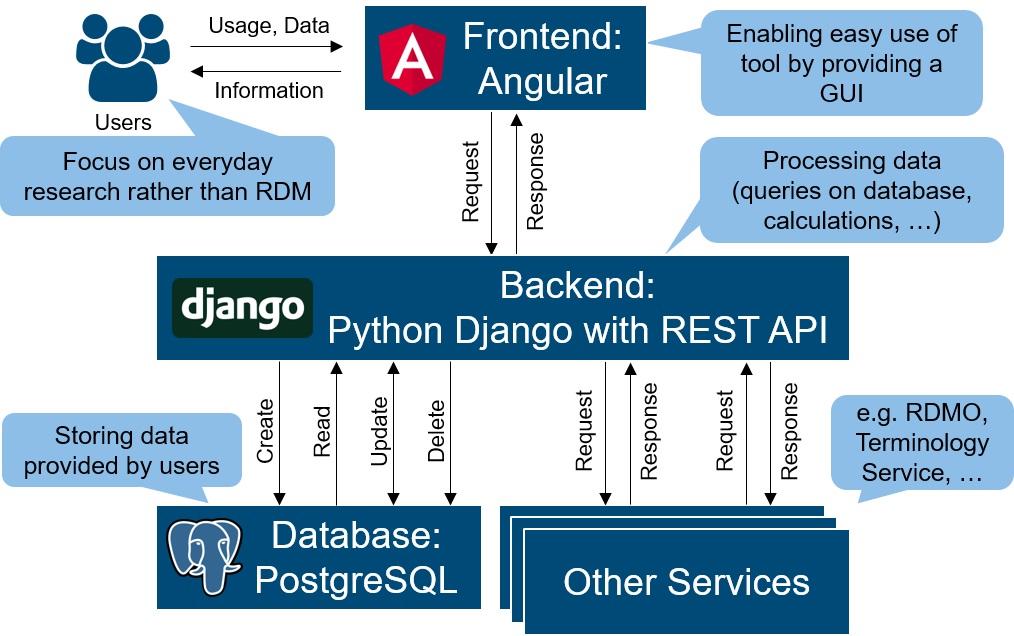Many researchers struggle with the complexity of RDM. The NFDI4Ing task area Frank aims to simplify RDM for researchers by supporting them with needed RDM knowledge, specific decision support along the RDM process and tooltips for their current RDM-step.
The motivation
The NFDI4Ing Archetype Frank is characterised by working with a wide range of different and heterogeneous data sources – from the collection of data from test persons up to manufacturing networks. One of the main challenges for the archetype is the synchronisation and access management of data that is generated at different sources simultaneously. Due to those conditions, the approach taken in Frank was to interview as many people as possible to determine how RDM can have a real benefit for most if not all of them. The answers pointed to one particular demand: Easy RDM with little to no additional time to be spend as overhead.Frank’s solution for that demand is a decision-support framework that implements not only workflows and checklists for RDM but also guides researchers along their specific RDM process, provides them with tooltips for certain tasks as well as hints for RDM trainings and other services provided by NFDI4Ing and other organisations and institutions. The framework also offers decision support for researchers based on their needs and the conditions of their research project. It is also supposed to manage metadata and, if possible, distribute it between different services. While this framework is focused and based on the specific requirements personified in archetype Frank, it may be possible to extend it to the whole NFDI4Ing community and beyond. Therefore, one goal is to ensure the interoperability and compatibility with as many services as possible.
The technology
The framework is based on three layers: The frontend, being implemented in Angular, the backend, based on Python Django, and a PostgreSQL Database. While the frontend is only there to communicate with the user using a GUI (or optional an API), the backend is the key for interoperability. Here the Django REST API provides a vast functionality, making communication with different services possible while maintaining full functionality within the framework itself.
The REST API is the heart of the interconnection between different services. REST offers a uniform interface enabling many different services to interact with each other. In addition, the data sent with requests and responses is enriched with metadata and the messages are self-descriptive, meaning communication between services is made easier and that it is possible to make the data human-readable. Frank highly encourages the usage of REST APIs.
As the task area Frank continues to upgrade and expand the framework, it aims to further spread it into the NFDI4Ing community. Feel free to contact us if you have questions or a service that would benefit from being connected to the framework.
Current status
As of now, the concept has been set and the community has validated the ideas. The three layers mentioned above are technically set up and running on the development environment, but do not yet provide any of the planned RDM functionalities. However, the feasibility of the framework itself has been proven, communication between the three layers works and the framework is now ready to be successively extended with the planned RDM functionalities themselves. Once a basic selection of those is implemented, the framework will be presented to the community as a demo version to collect feedback of the community. The collection of feedback will be continued and accompany future steps in the iterative development of the framework.As the task area Frank continues to upgrade and expand the framework, it aims to further spread it into the NFDI4Ing community. Feel free to contact us if you have questions or a service that would benefit from being connected to the framework.
Tobias Hamann

